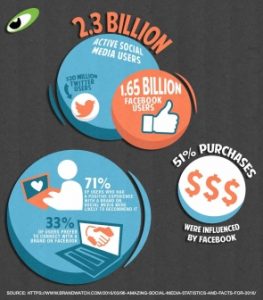Small, or ‘Main Street’, businesses are a powerful group in the U.S. We pass them on our way to work, to school or running errands. Many of us visit them on a weekly or even daily basis. And, for some, the owners and managers of small businesses are the audience for the products and services we, or our company, sell.
Just to put this group in perspective, according to the U.S. Small Business Administration, our 28 million small businesses make up for 54% of all U.S. sales and 55% of all jobs in this country. In fact, since 1990, big business has eliminated over 4 million jobs in the U.S., while small business has added more than 8 million.
As powerful as this group is in terms of jobs, sales and our overall economy, it’s also one of the more unique personas to identify and target for sales and marketing professionals. A root challenge is that many, if not most, small business owners are working in their business and not on it. A 2014 survey by TD Bank found that 68% of the small business owners said that they love talking with clients and customers versus just 15% who noted favoring the bookkeeping, or business management, side of their business. Not all that surprising, but an interesting pillar of the small business persona, validated by the owners themselves.
Small business owners also continue to face mounting challenges including a more competitive sales landscape, both online and offline, increasing costs, incremental expenses around hiring and retaining key talent, accessing working capital/financing and, of course, pure business growth. Eye opening is the fact that the average small business net income is only 6.3% of revenues, showing clearly that every penny counts.
Leading investment firm, Goldman Sachs, also has a keen eye on small business. Their 10,000 small businesses, a philanthropic initiative launched in 2009, pledges $ 500 million to aid small businesses in the U.S. and United Kingdom. In a recent 10KSB report, they identified the top four challenges small business owners identify as they enter their program:
- Finding and keeping customers (31%)
- Financing the business (21%)
- Developing and updating a business strategy (16%)
- Hiring and keeping good employees at reasonable wages (15%)
As I compare the surveys from TD Bank and the 10KSB report, there’s some interesting alignment. Small business owners don’t love to work on the business aspect (bookkeeping, business management, talent management), but they clearly understand that those are their most pressing challenges and the ones that hold them back from growing their business.
So, where do sales and marketers come in? Historically, at least in my business, our sales proposition to the small business owner has largely been focused on price. Is this the lowest cost? Can I get this hardware cheaper elsewhere? Am I locked into a contract, which may cost me more in the end? And, it’s not just my world of payment processing. Just think about how many sales people are calling into the small business owner on a daily or weekly basis – banks, insurance agents, business management solutions, marketing and advertising companies, cleaning services – the list goes on and on. They’re all selling their individual service and many, if not most, are selling on price and not value.
What’s awesome is that technology is now changing the playing field for many our small business customers. New integrated solutions like point-of-sale, inventory management, quick books synchronization, digital gift and loyalty, online reputation and social management, small business lending/working capital and more are providing small business owners (and the companies that service them) with holistic – and affordable – packages that are multi-tenanted and designed specifically to simplify their internal operations.
For us, it’s meant looking at our business through a different lens, working to re-train internal and external sales teams on selling value, asking questions and being a consultative liaise versus the ‘one call close’. Of course, transition doesn’t happen overnight, but it’s an exciting and interesting pivot to bring to an organization that has been more or less unilaterally focused for nearly two decades. It’s simulating new ideas, new energy and new opportunities within our organization and it’s deepening our relationships with our small business customers and our reseller partners.
In the end, you shouldn’t overcharge for a product or service, but it’s not all about price. It comes down to the relationship, understanding the customer’s needs and presenting business solutions that will help them overcome challenges, make their lives easier and help drive incremental revenues to their bottom line. When it’s about value, and not price, it’s more meaningful for both the company ‘selling’ and the small business.
Business & Finance Articles on Business 2 Community(55)







